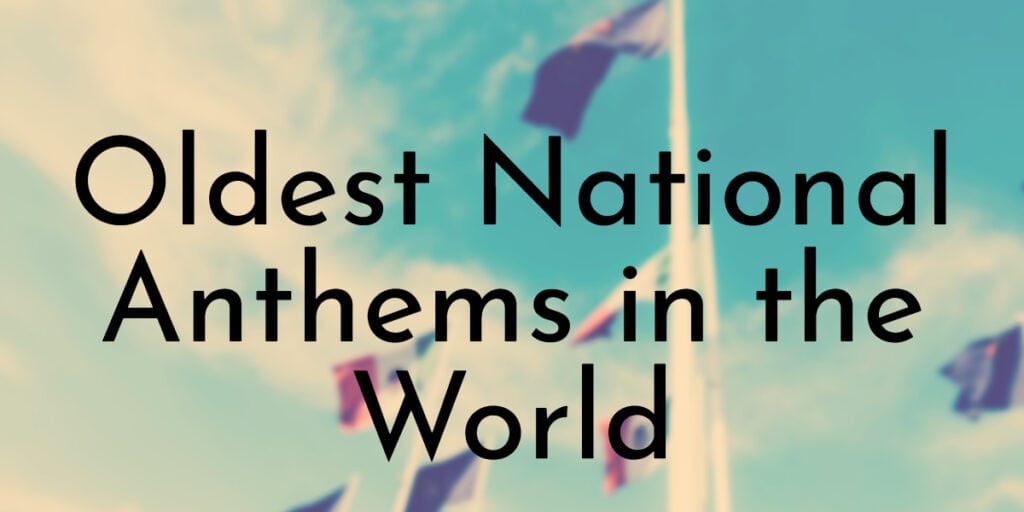The national anthem expresses the identity and values of a nation-state and symbolizes national pride and patriotism. Most modern nation-states today have a designated national anthem.
These songs or hymns are often officially recognized as the national anthem by a legislative law or under the state’s constitution. However, a song can sometimes be considered a national anthem only by tradition without any legislative recognition.
Some national anthems find their roots in royal anthems. These songs or hymns were originally composed in praise of the monarch or the royal dynasty and later adopted as the country’s national anthem, either by law or custom.
Here we list 8 of the oldest national anthems in the world. While gathering this list, we primarily considered the time of its adoption as a national anthem. In some cases, the timeline is blurred as the songs became a national anthem by tradition, and there’s no official date of adoption. In those instances, we considered the date the song was first performed.
8. Hino Nacional Brasileiro
Date adopted: April 13, 1831
Country: Brazil
Lyrics: Joaquim Osório Duque-Estrada
Music: Francisco Manuel da Silva
Duration: 3m 21s
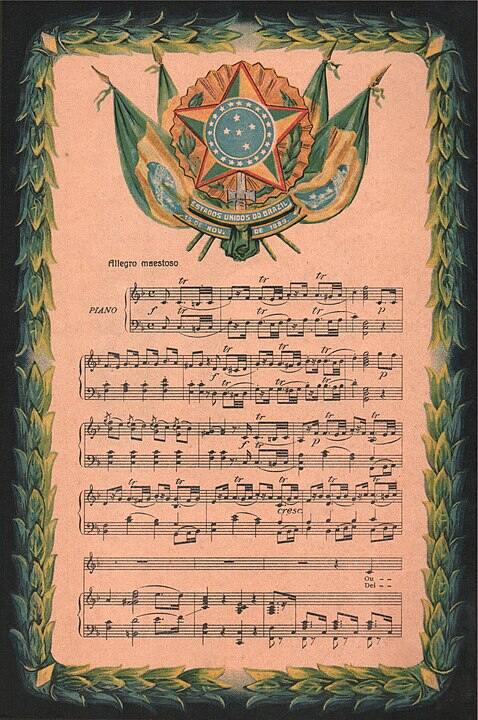
Hino Nacional Brasileiro, or the Brazilian National Anthem, has a complex history.
The melody was composed by Francisco Manuel da Silva in April 1831. However, some historians believe he composed the music in 1822 to commemorate Brazilian independence. It was first played publicly on April 13, 1831, five days after the former Emperor Pedro I abdicated the crown.
The lyrics of the version performed that night were written by Appeals Judge Ovídio Saraiva de Carvalho e Silva to commemorate the abdication. However, the lyrics stopped being used soon because it was considered offensive to the Portuguese. Still, the melody continued to be played at all official events and became the de facto national anthem.
In 1890, the melody was formally recognized as the national anthem. The current lyrics were written in 1909 by Joaquim Osório Duque-Estrada. After several changes, the official lyrics were adopted in 1922.
Did you know?
Pedro I wrote the song that was used as the national anthem of Brazil from 1822 to 1831. The song is now recognized as the country’s official patriotic song.
7. Himno Nacional del Perú
Date adopted: September 1821
Country: Peru
Lyrics: José de la Torre Ugarte
Music: José Bernardo Alzedo
Duration: 3m 9s
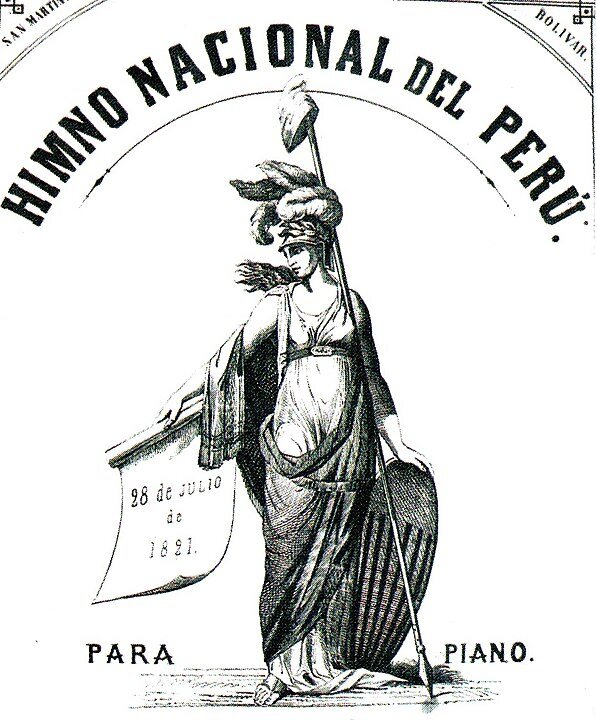
Himno Nacional del Perú, also known as Marcha Nacional del Perú or Somos libres, was selected as the national anthem of Peru in a public contest.
Shortly after its independence, the first leader of Peru, general José de San Martín, declared that the country’s national anthem would be chosen through a contest. Composers from across the nation were invited to send their entrees to be considered before September 18, 1821.
Seven entrees were submitted, and the song written by José de la Torre Ugarte and composed by José Bernardo Alzedo was unanimously selected. The national anthem was first performed on September 23, 1821, at the theatre of Lima.
Did you know?
In June 2005, the Constitutional Tribunal found out that the first verse of the national anthem was not a creation by José de la Torre Ugarte but was popular folklore of that time.
6. Himno Nacional Argentino
Date adopted: May 11, 1813
Country: Argentina
Lyrics: Vicente López y Planes
Music: Blas Parera
Duration: 3m 33s
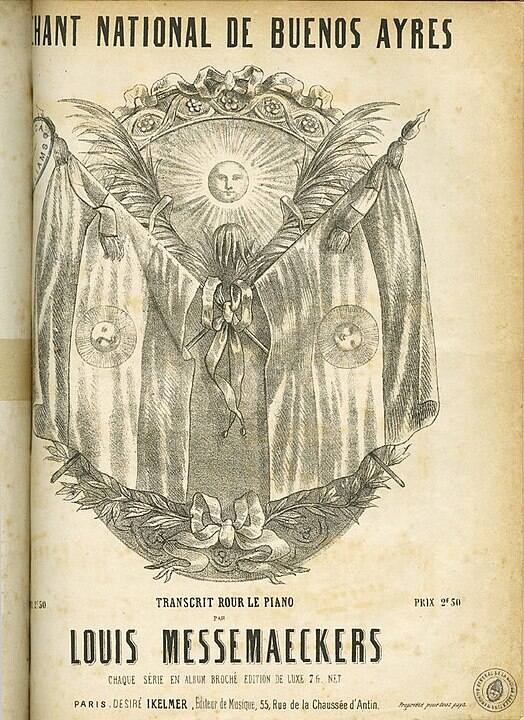
Argentine politician and writer Vicente López y Planes wrote Himno Nacional Argentino (in English, the Argentine National Anthem). Spanish musician Blas Parera set it to music. The song was adopted as the only official song of the country on May 11, 1813.
The song celebrates the beauty of the homeland, the struggle for freedom, and the unity of the Argentine people. Unfortunately, the original composition was longer than the current version.
Before 1860, many variations of the song were sung, and thus an official codified version was created. However, the changes were reversed in 1927, which created controversy within the country. Finally, in 1944, the shortened version of the original song was restored and recognized as the national anthem.
Did you know?
Before the current song, Argentina had two different national anthems. The first song was rejected because it only talked about French rule over Spain, and the second one was considered ineffective. The final song was selected in a public contest, similar to Peru.
5. La Marseillaise
Date adopted: July 14, 1795
Country: France
Lyrics: Claude Joseph Rouget de Lisle
Music: Claude Joseph Rouget de Lisle
Duration: 1m 19s
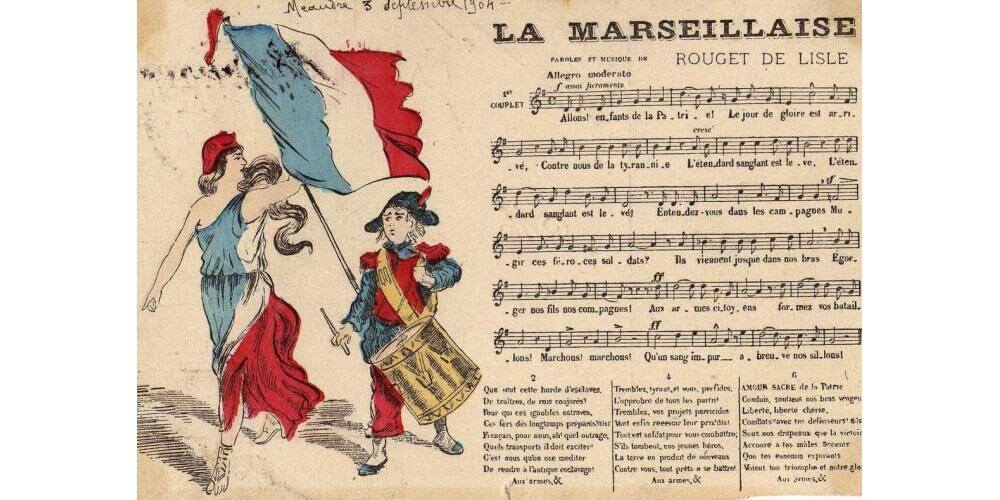
La Marseillaise is one of the most powerful and emotive national anthems. It is also the first national anthem to get official recognition. The song was written overnight during the French Revolution.
French army officer Claude Joseph Rouget de Lisle wrote and composed the song in 1792 to inspire French troops to join the war and defend their homeland against the invading Austrians and Prussians.
A group of volunteers first performed the song from Marseillaise in Paris; the song got its name there. The song became immensely popular across the country and was adopted as the official national anthem in 1795 after the French Directory took power.
Did you know?
The song was originally titled the Chant de guerre pour I’Armée du Rhin, which translates to a War song for the Army of the Rhine.
4. Kong Christian stod ved højen mast
Date adopted: 1780
Country: Denmark
Lyrics: Johannes Ewald
Music: Unknown
Duration: 1m 11s
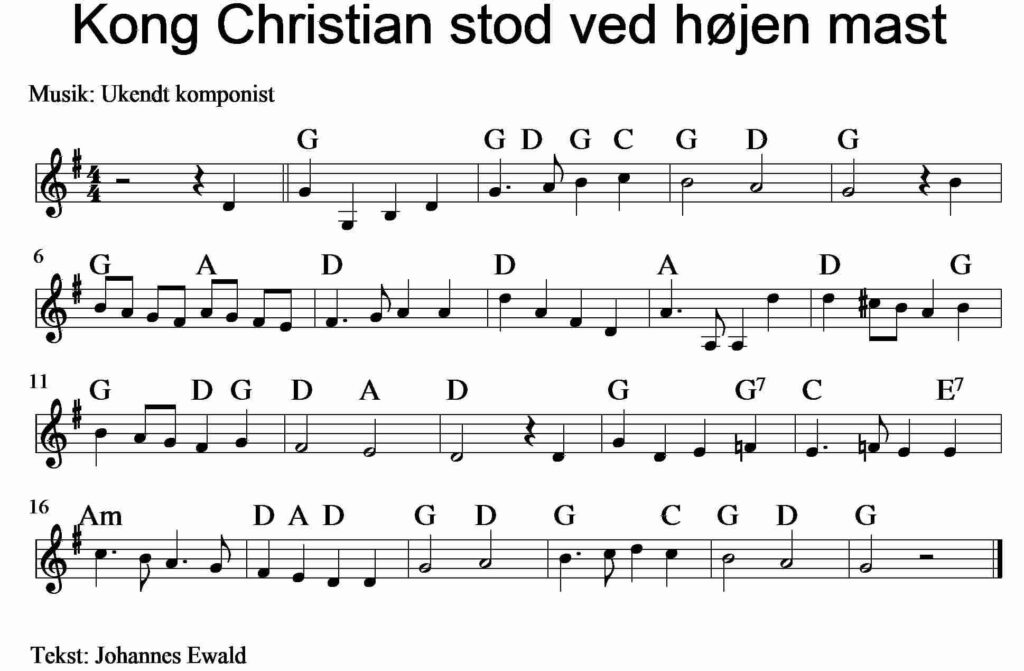
Kong Christian stod ved højen mast, translated to English as “King Christian stood by the lofty mast”, is the unofficial royal anthem and one of the two national anthems of Denmark. The other one is Der er et yndigt land.
The song is a tribute to the Danish-Norwegian sailors. It praises their heroic deeds during the war against Sweden in the 17th and 18th centuries. It was first performed on Kings Christian VII’s birthday in January 1780 as part of the play The Fishermen, written by Johannes Ewald.
Although the song has the status of the national anthem, it is usually performed in events related to the Danish royal house and the military. It is also played on Danish Radio every New Year’s Eve, following the other national anthem.
Did you know?
In the play performed in 1780, only the fourth verse was included. At the time of the performance, Sweden was one of the critical allies of Denmark against the UK, and the first three verses of the song were full of hostility towards Sweden.
3. La Marcha Real
Date adopted: 3 September 1770
Country: Spain
Lyrics: Not applicable
Music: Manuel de Espinosa de los Monteros
Duration: 0m 54s
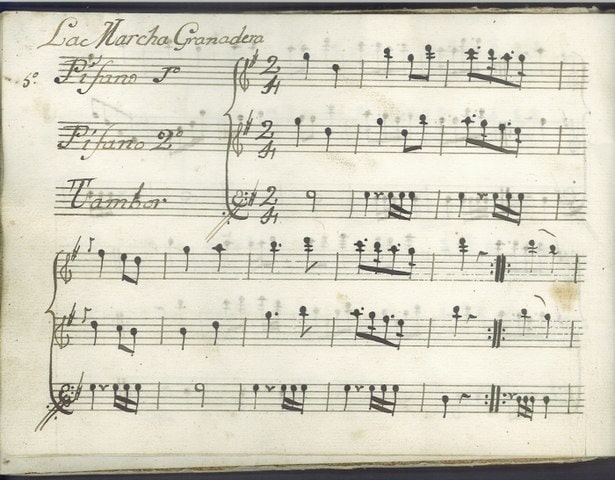
La Marcha Real, or The Royal March, the national anthem of Spain, dates back to the 18th century. It is one of the very few national anthems without any official lyrics.
The song has its root in the Marcha Granadera, a military march song dedicated to the grenadier soldiers. The troop would always sing the melody while parading before the king. First, it became popular in Madrid, later spread across the country, and became known as the Marcha Real.
In September 1970, Charles III declared the song the official March of Honor. It gained the national anthem’s status later when Isabel II reigned the country.
Many attempts were made throughout history to set lyrics to the melody, but none was officially approved.
Did you know?
Besides Spain, only three other countries have national anthems with no lyrics. They are Bosnia and Herzegovina, San Marino, and Kosovo.
2. God Save the King/Queen
Date adopted: September 1745
Country: United Kingdom
Lyrics: Unknown
Music: Unknown
Duration: 1m 3s
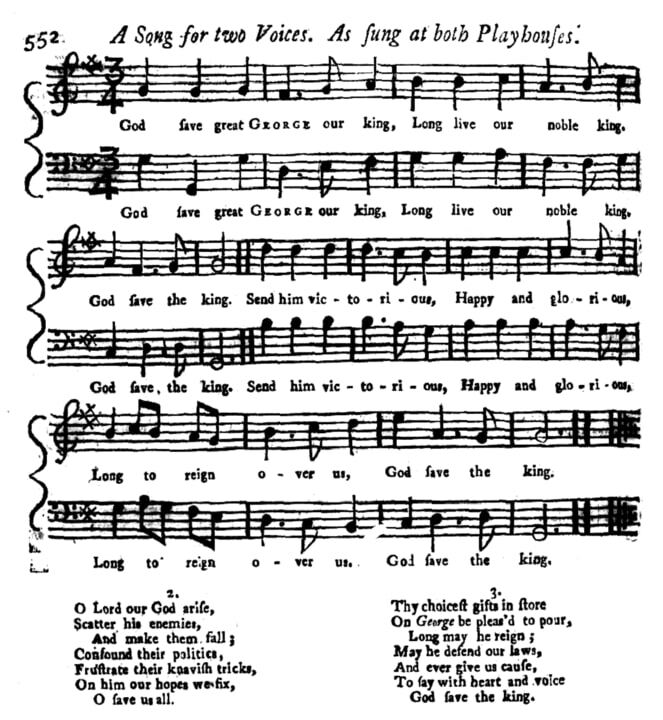
God Save the King (or Queen, depending on the gender of the reigning monarch), the de facto national anthem of the UK, was first performed in London in September 1745. The performance was arranged by Drury Lane, the leader of the Theatre Royal’s band after Prince Charles Edward Stuart achieved victory against the army of Kind George II at Prestonpans.
Soon it became a common practice across public entertainment venues to greet monarchs with this song. The exact timeline is unclear, but it was probably sometime at the beginning of the nineteenth century when the song became the national anthem.
Like many other things in Britain, this song gets official recognition from customs and practice.
Did you know?
Around 140 composers, including some of the most celebrated ones such as Beethoven, Brahms, and Haydn, used the song’s tune in their compositions.
1. Wilhelmus
Date adopted: 17th century, May 10, 1932 (official)
Country: Netherlands
Lyrics: Disputed
Music: original composer unknown, later adapted by Adrianus Valerius
Duration: 0m 49s
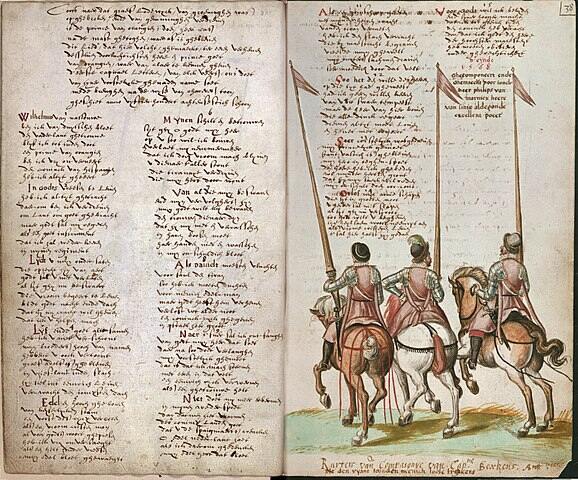
“Wilhelmus van Nassouwe,” commonly known as “Het Wilhelmus” or “Wilhelmus,” is arguably the oldest national anthem in the world still in use.
It got official recognition as the national anthem of the Netherlands only in 1932. However, the song had been sung for centuries at various important official events and became the de facto national anthem.
The song was written sometime between 1568 and 1572 during the Dutch Revolt, the Dutch war of independence from the Spanish Empire.
The 15 stanzas-song is written in the first person and speaks about the life and deeds of Willem van Nassau, aka William of Orange, the main leader of the revolt. It also talks about the Dutch people’s desire for freedom and courage to fight against Spanish rule.
Did you know?
Wilhelmus is written as an acrostic poem where the first letters of each stanza spell out the name of Willem van Nassau.


